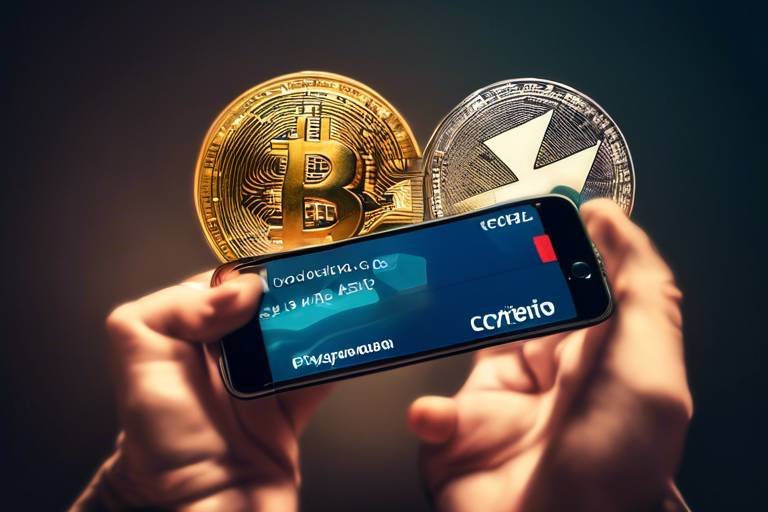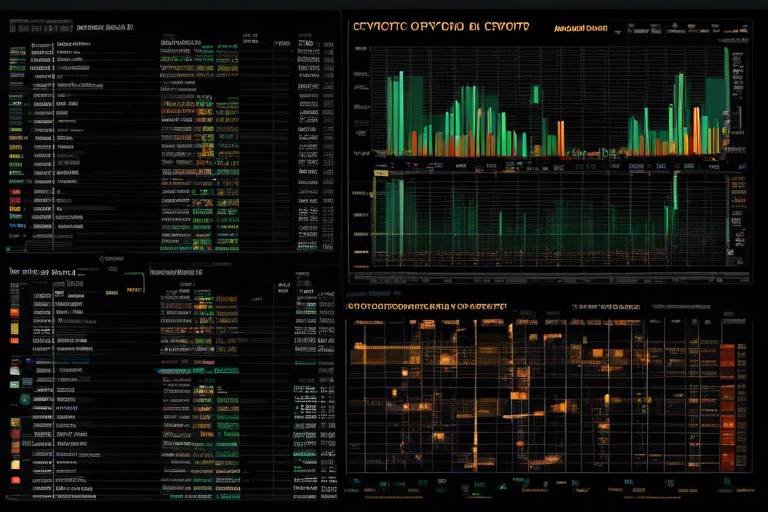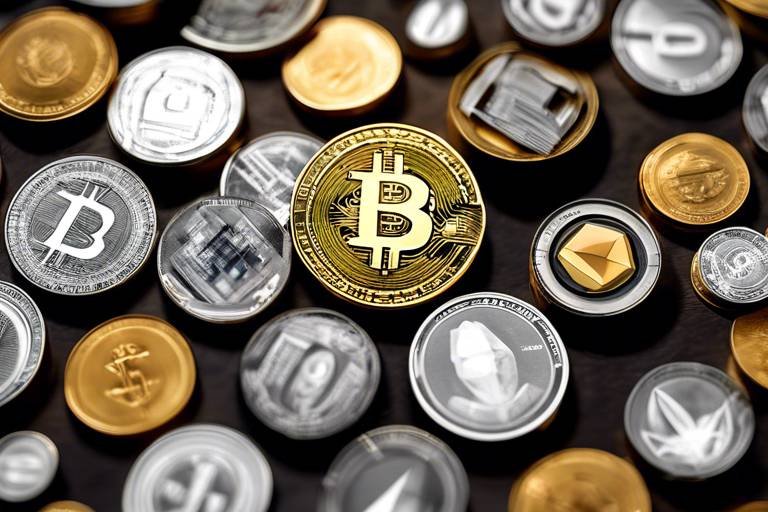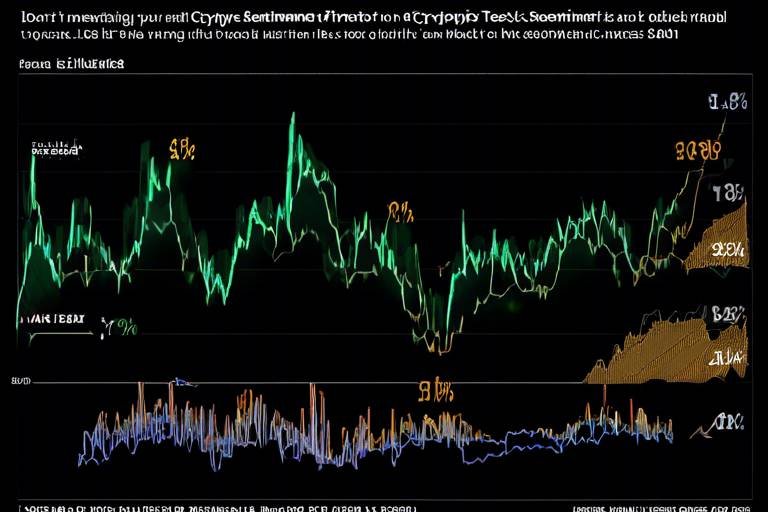How to Identify Scams in the NFT Space
In the thrilling and often bewildering world of Non-Fungible Tokens (NFTs), the potential for profit is immense, but so is the risk of falling prey to scams. As the NFT market continues to expand at a breakneck pace, it becomes increasingly important for investors and enthusiasts to arm themselves with the knowledge necessary to navigate this digital landscape safely. Understanding how to identify scams is not just a skill; it's an essential survival tactic in a space where deception can lurk behind every pixel. So, how can you protect yourself and your investments? Let’s dive into the critical strategies that will help you spot potential scams before they can do any damage.
First, let’s get on the same page about what NFTs are. Non-Fungible Tokens are unique digital assets that represent ownership of a specific item or piece of content, often secured on a blockchain. Unlike traditional cryptocurrencies like Bitcoin or Ethereum, which are fungible and can be exchanged on a one-to-one basis, NFTs are one-of-a-kind, making them perfect for representing art, music, and other creative works. This uniqueness is what makes NFTs so appealing, but it’s also what makes them a target for scammers looking to exploit the uninitiated. Understanding the fundamental characteristics of NFTs is crucial for recognizing the red flags that may indicate a scam.
As you venture deeper into the NFT space, it’s vital to be aware of the various scams that are all too common. These scams can take many forms, each designed to deceive unsuspecting investors. Here’s a look at some prevalent scams you should be on the lookout for:
Phishing attacks are a significant threat in the NFT realm, where scammers impersonate legitimate platforms to steal your sensitive information. Imagine receiving an email that looks exactly like it’s from your favorite NFT marketplace, asking you to verify your account by clicking a link. Before you know it, you’ve handed over your credentials to a fraudster! Understanding how these attacks work is crucial for safeguarding your digital assets.
Recognizing suspicious links and domain names is essential to avoid falling victim to phishing scams. Scammers often create fake websites that closely resemble legitimate ones, so always double-check the URL before entering your information. Look for subtle differences in spelling or domain endings that might indicate a scam site.
Using secure wallets and enabling two-factor authentication can help protect your digital assets from phishing attacks. Think of your wallet as a digital vault; the more layers of security you add, the harder it becomes for intruders to break in. Always choose reputable wallets and keep your private keys to yourself!
Another common scam involves fake NFT marketplaces that lure unsuspecting buyers into purchasing non-existent tokens. These fraudulent sites often feature enticing artwork and unrealistic prices, making it easy for anyone to get swept away. To avoid these scams, always verify the legitimacy of the platform you’re using. Check for user reviews, official partnerships, and a solid presence on social media.
Being able to spot red flags is crucial in avoiding scams. Here are some critical warning signs that may indicate a scam:
Scammers often lure victims with promises of guaranteed returns or exclusive access to valuable NFTs. If it sounds too good to be true, it probably is! Always approach such claims with skepticism and do your own research.
A lack of transparency from creators or platforms is a significant warning sign. If you can’t find information about the project team or the roadmap, steer clear! This section emphasizes the importance of researching project backgrounds and team credibility before investing.
Conducting thorough research is vital for identifying scams in the NFT space. Here are practical steps you can take to evaluate projects and their legitimacy:
Investigating the backgrounds and reputations of project teams can reveal potential scams. Look for team members with a history of successful projects and transparent communication. The more you know, the safer your investments will be.
Engaging with community feedback and reviews can provide valuable insights into a project's legitimacy. Leverage social media platforms and forums to gauge the sentiment surrounding a project. If the community is buzzing with excitement and positive experiences, you might be looking at a legitimate opportunity.
Understanding how to report scams is essential for protecting others in the community. If you encounter fraudulent activities, don’t hesitate to take action. Document all evidence and contact the relevant authorities to report the scam.
Reporting scams to relevant authorities can help mitigate the impact of fraudulent activities. Make sure to gather as much information as possible before reaching out to ensure your report is comprehensive. Remember, your actions can help prevent others from falling victim.
Raising awareness within the NFT community about potential scams can help protect fellow investors. Share your experiences and knowledge through social media, forums, and community groups. The more informed everyone is, the harder it becomes for scammers to thrive.
In conclusion, staying informed and vigilant is key to navigating the NFT space safely. By understanding the types of scams, recognizing red flags, and conducting due diligence, investors can protect their assets effectively. Remember, knowledge is your best defense in this fast-paced digital landscape.
- What are NFTs? NFTs are unique digital assets that represent ownership of a specific item, secured on a blockchain.
- How can I identify a scam? Look for unrealistic promises, lack of transparency, and verify project teams and platforms.
- What should I do if I encounter a scam? Document evidence and report it to the relevant authorities.
- How can I protect my digital assets? Use secure wallets, enable two-factor authentication, and be cautious of phishing attempts.

Understanding NFTs
Non-Fungible Tokens, or NFTs, are a revolutionary concept in the digital world, representing ownership of unique items or assets on the blockchain. Unlike traditional cryptocurrencies such as Bitcoin or Ethereum, which are fungible and can be exchanged for one another, NFTs are one-of-a-kind. This uniqueness is what makes them so appealing to collectors, artists, and investors alike. Imagine owning a digital piece of art that no one else in the world possesses; that's the magic of NFTs!
At their core, NFTs are built on blockchain technology, primarily on the Ethereum network, though other blockchains like Binance Smart Chain and Flow are gaining traction as well. This technology ensures that each NFT has a verified proof of ownership, making it impossible to duplicate. As a result, NFTs can represent a wide array of digital assets, including art, music, virtual real estate, and even tweets! The sky's the limit when it comes to what can be tokenized.
To better understand NFTs, let's break down some of their key characteristics:
- Uniqueness: Each NFT has distinct information or attributes that make it different from any other token.
- Indivisibility: Unlike cryptocurrencies, NFTs cannot be divided into smaller units. You either own the whole token or none of it.
- Ownership: The blockchain records who owns the NFT, providing a transparent and tamper-proof history of ownership.
- Interoperability: NFTs can be bought, sold, or traded across different platforms that support the same standards, such as ERC-721 or ERC-1155 on Ethereum.
As the NFT market continues to evolve, it's crucial for enthusiasts and investors to grasp the fundamental principles that govern these digital assets. Understanding the technology behind NFTs not only empowers you to make informed decisions but also helps you identify potential scams lurking in this rapidly changing landscape.
In summary, NFTs are not just a passing trend; they are a new paradigm for digital ownership. As you dive deeper into the NFT space, keep in mind that while there are incredible opportunities to explore, there are also risks involved. Awareness and education are your best tools for navigating this exciting yet complex world.

Common Types of NFT Scams
The NFT landscape is booming, and with that surge in popularity comes a shadowy underbelly of scams designed to exploit unsuspecting investors. Understanding the common types of scams is crucial for anyone looking to navigate this digital frontier safely. From phishing attacks to fake marketplaces, the methods used by scammers are as varied as the NFTs themselves. Let’s delve into some of the most prevalent scams that are currently targeting NFT enthusiasts.
One of the most insidious threats in the NFT space is phishing. Scammers often impersonate legitimate platforms, sending emails or messages that appear to be from trusted sources. These communications typically contain links that lead to fake websites designed to steal your sensitive information, such as passwords and wallet keys. It’s a bit like a wolf in sheep’s clothing—everything looks legitimate until it’s too late. To protect yourself, always verify the sender's address and avoid clicking on suspicious links.
Recognizing phishing attempts is essential for safeguarding your assets. Here are some tips to help you identify potential phishing links:
- Check the URL: Scammers often create URLs that closely resemble legitimate sites, but with slight variations. Look for misspellings or unusual domain names.
- Hover Over Links: Before clicking, hover over links to see the actual URL. If it looks suspicious, don’t click it!
- Look for HTTPS: Legitimate sites will use HTTPS for secure connections. If a site doesn’t, it’s a red flag.
To further safeguard your digital assets, consider using secure wallets that offer advanced security features. Enabling two-factor authentication (2FA) is another effective strategy to protect your NFTs from unauthorized access. Think of your wallet as a digital vault—locking it down with multiple layers of security ensures that only you have the key.
Another common scam involves fake NFT marketplaces that lure unsuspecting buyers into purchasing non-existent tokens. These fraudulent platforms often mimic legitimate marketplaces, complete with enticing offers and flashy designs. It’s like a mirage in the desert; it looks appealing, but when you get closer, it’s just an illusion. To avoid falling for these scams, always do your homework. Check for reviews, look for community feedback, and ensure that the marketplace has a solid reputation before making any transactions.
In conclusion, being aware of these common types of scams is the first step in protecting yourself in the NFT space. By staying informed and cautious, you can navigate this exciting digital world while safeguarding your investments from potential threats.
Q: What is a phishing attack?
A: A phishing attack is a fraudulent attempt to obtain sensitive information by disguising as a trustworthy entity in electronic communications.
Q: How can I identify a fake NFT marketplace?
A: Look for reviews, verify the website's URL, and check community feedback. If something feels off, it's better to err on the side of caution.
Q: What should I do if I suspect I've been scammed?
A: Document all evidence and report the scam to relevant authorities. Sharing your experience with the community can also help prevent others from falling victim.

Phishing Attacks
Phishing attacks are a significant threat in the NFT space, where scammers cleverly impersonate legitimate platforms to steal sensitive information from unsuspecting users. Imagine this: you receive an email that looks exactly like it’s from your favorite NFT marketplace, complete with logos and branding. It invites you to click a link to verify your account. Sounds harmless, right? But this is where the trap lies! These malicious attempts can lead to devastating consequences, including the loss of your precious NFTs and personal data.
Understanding how these attacks work is crucial for safeguarding your digital assets. Phishing can take many forms, including emails, direct messages on social media, and even fake websites that mirror legitimate ones. The goal is always the same: to trick you into revealing your private keys or login credentials. To help you stay one step ahead, here are some key signs to watch out for:
- Urgent Language: Scammers often create a false sense of urgency, claiming that your account will be suspended if you don't act quickly.
- Unusual Sender Addresses: Always double-check the sender's email address. Scammers often use addresses that look similar to legitimate ones but have slight variations.
- Generic Greetings: Legitimate companies usually address you by your name, while phishing attempts often use generic greetings like "Dear User."
Recognizing these warning signs can help you avoid falling victim to phishing scams, but it doesn't stop there. Protecting your wallet is equally important. Using secure wallets and enabling two-factor authentication (2FA) can add an extra layer of security to your digital assets. Think of your wallet like a safe; the more locks and alarms you have, the harder it is for thieves to break in. Here are some best practices to keep your NFTs safe:
- Use Hardware Wallets: These are physical devices that store your private keys offline, making it nearly impossible for hackers to access them.
- Enable Two-Factor Authentication: 2FA adds an additional step when logging into your accounts, which can significantly reduce the risk of unauthorized access.
- Regularly Update Software: Keeping your wallet and security software up to date ensures you have the latest protections against vulnerabilities.
By staying informed about phishing attacks and implementing robust security measures, you can significantly reduce the risk of falling victim to these deceptive tactics. Remember, in the fast-paced world of NFTs, being proactive is your best defense. Now, let’s move on to some other common scams that you should be aware of.
Q: What should I do if I think I've fallen for a phishing scam?
A: If you suspect you've been scammed, immediately change your passwords for affected accounts, contact your wallet provider, and report the incident to relevant authorities.
Q: How can I verify if a link is safe before clicking?
A: Hover over the link to see the actual URL. If it looks suspicious or doesn't match the official site, do not click it. You can also use link-checking tools online.
Q: Are hardware wallets really necessary?
A: While not mandatory, hardware wallets provide an additional layer of security, especially for those holding significant investments in NFTs. They keep your private keys offline, making them less vulnerable to online attacks.
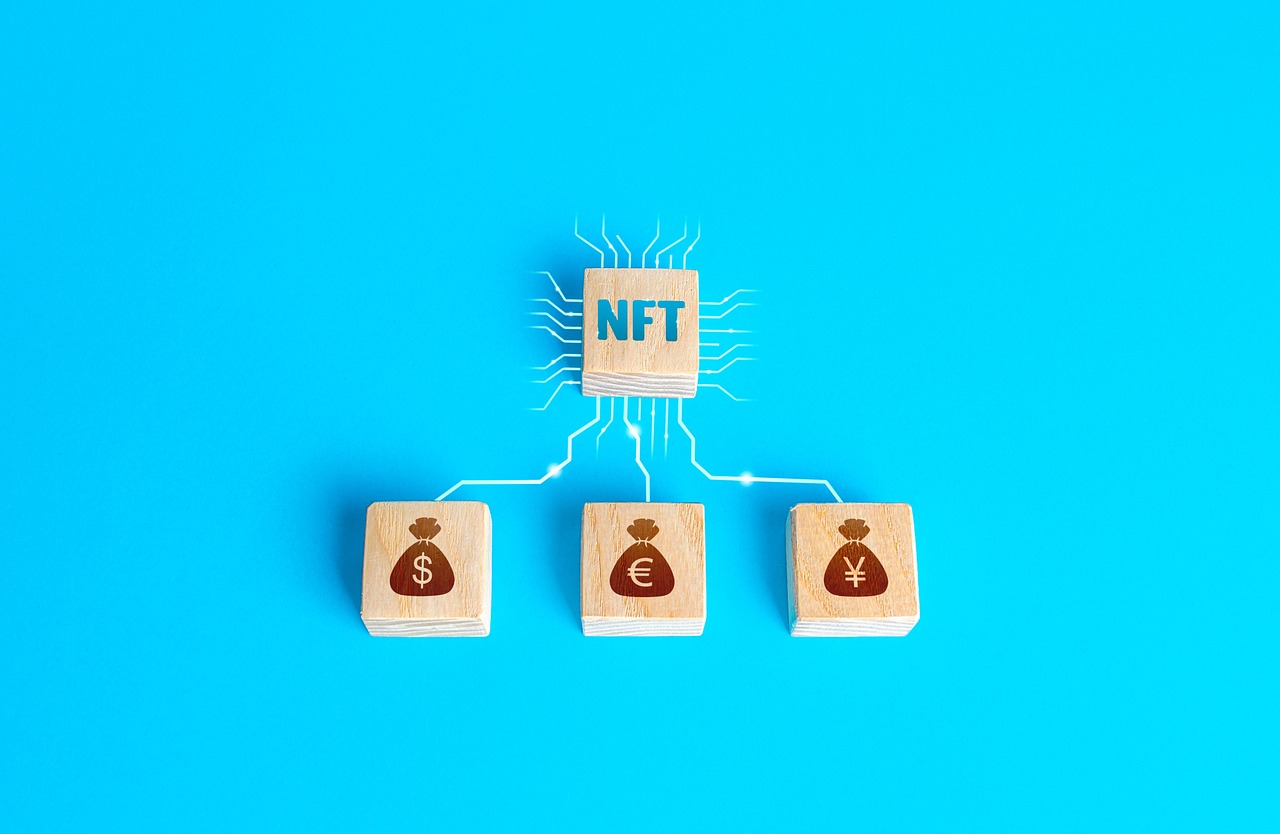
Identifying Phishing Links
In the vast and often chaotic landscape of the NFT space, phishing attacks have emerged as a prominent threat. These scams can be particularly insidious because they prey on unsuspecting users by impersonating legitimate platforms. To protect yourself, you need to develop a keen eye for identifying suspicious links and domains. One of the first things to consider is the URL structure. Legitimate websites typically have clean, straightforward URLs. If you encounter a link that seems overly complicated or contains strange characters, approach it with caution.
Another common tactic used by scammers is to create URLs that closely resemble those of reputable sites. For example, they might replace a letter or add a slight variation, such as using nftmarket.com instead of nftmarketplace.com. These subtle changes can easily trick even the most vigilant users. Always double-check the URL before clicking on any links—if something feels off, it probably is. Additionally, look for SSL certificates. A secure site should begin with https:// rather than http://. The presence of an SSL certificate indicates that the site is taking measures to protect your data.
Furthermore, beware of unsolicited messages that contain links. Scammers often use social media or direct messages to reach out to potential victims. If you receive a message from someone claiming to be a representative of a well-known NFT platform, don’t click on any links immediately. Instead, visit the official website directly by typing the URL into your browser. This extra step can save you from falling into a phishing trap.
When in doubt, you can also use online tools that check the safety of a URL. Websites like VirusTotal allow you to paste a link to see if it has been reported as malicious. This can be a quick and effective way to validate the legitimacy of a link before you click on it. Remember, staying vigilant and being cautious with links can significantly reduce your risk of falling victim to phishing scams in the NFT space.
- What should I do if I clicked on a phishing link? If you suspect that you have clicked on a phishing link, immediately disconnect from the internet and run a virus scan on your device. Change your passwords and monitor your accounts for any suspicious activity.
- How can I recognize a legitimate NFT marketplace? Always check for reviews, look for official partnerships, and verify the website's SSL certificate. Legitimate marketplaces will have a clear and professional-looking website.
- Are there any tools to help identify phishing attempts? Yes, tools like VirusTotal and browser extensions can help detect and block phishing attempts. Always keep your security software updated.

Protecting Your Wallet
When it comes to the world of NFTs, is not just a precaution; it’s an absolute necessity. With the rise of digital assets, the potential for scams has also surged, making it essential for every investor to prioritize wallet security. Imagine your wallet as a treasure chest filled with valuable digital art and collectibles. Would you leave it unlocked in a crowded marketplace? Of course not! The same logic applies here.
One of the most effective ways to safeguard your wallet is by using a secure wallet. There are two main types of wallets: hot wallets and cold wallets. Hot wallets are connected to the internet, making them convenient but also vulnerable to attacks. On the other hand, cold wallets, like hardware wallets, store your assets offline, providing an added layer of security. Think of cold wallets as a safe deposit box in a bank, while hot wallets are like carrying cash in your pocket. For serious investors, a cold wallet is often the best choice.
Additionally, enabling two-factor authentication (2FA) is another crucial step in protecting your digital assets. This adds an extra layer of security by requiring not just a password but also a second form of verification, such as a code sent to your mobile device. It’s like having a double lock on your door; even if someone has your key (password), they still can’t get in without the second lock (the verification code).
To further enhance your wallet's security, consider the following tips:
- Regularly update your software: Keeping your wallet software up-to-date ensures you have the latest security patches and features.
- Be cautious with public Wi-Fi: Avoid accessing your wallet over unsecured networks, as they can be breeding grounds for hackers.
- Use strong, unique passwords: A strong password is your first line of defense. Consider using a password manager to keep track of complex passwords.
In conclusion, protecting your wallet in the NFT space is akin to fortifying your castle. By using secure wallets, enabling two-factor authentication, and following best practices for online security, you can significantly reduce the risk of falling victim to scams. Remember, your digital assets are valuable, and taking these steps will help ensure they remain safe and sound.
Q: What is the best type of wallet for NFTs?
A: The best type of wallet for NFTs is a cold wallet (hardware wallet) as it provides the highest level of security by keeping your assets offline.
Q: How can I tell if a wallet is secure?
A: Look for wallets that offer two-factor authentication, have a good reputation, and are regularly updated to fix security vulnerabilities.
Q: Is it safe to use public Wi-Fi for accessing my wallet?
A: It is not safe to use public Wi-Fi for accessing your wallet, as it can expose you to potential hacking and phishing attacks.
Q: What should I do if I think my wallet has been compromised?
A: If you suspect your wallet has been compromised, immediately transfer your assets to a secure wallet and change your passwords. Report the incident to the wallet provider and relevant authorities.

Fake Marketplaces
The rise of Non-Fungible Tokens (NFTs) has led to a surge in interest and investment, but with this boom comes the inevitable presence of . These fraudulent platforms are designed to deceive unwary buyers into purchasing non-existent tokens, leading to financial losses and disappointment. It's essential to arm yourself with knowledge to avoid falling into these traps, as the NFT landscape can sometimes feel like a wild west of digital assets.
Fake marketplaces often mimic legitimate sites, making it challenging for even seasoned investors to differentiate between the two. They may employ sleek designs and use similar domain names to trick users into believing they are on a reputable platform. For instance, a scam site might use a domain like "nftmarketplace.com" instead of the authentic "realnftmarketplace.com". This slight difference can be easily overlooked, especially if you're in a rush to snag that trending NFT.
To protect yourself from these scams, there are several key indicators to watch out for:
- Unrealistic Pricing: If a marketplace offers NFTs at prices that seem too good to be true, they probably are. Always compare prices across multiple platforms.
- Limited Information: Legitimate marketplaces provide detailed information about the NFTs they sell, including the creator's background and the NFT's history. If this information is sparse or missing, proceed with caution.
- Payment Methods: Be wary of marketplaces that only accept unconventional payment methods or cryptocurrencies. Reputable sites typically offer a variety of secure payment options.
Additionally, researching the marketplace is crucial. Look for reviews and feedback from other users. Engaging with the community on social media platforms or forums can provide insights into the marketplace's legitimacy. If you notice a pattern of complaints or warnings, it's best to steer clear.
Here’s a simple table to summarize the key characteristics of fake marketplaces versus legitimate ones:
| Characteristic | Fake Marketplaces | Legitimate Marketplaces |
|---|---|---|
| Website Design | Similar to real sites but with subtle differences | Professional and consistent branding |
| Price Range | Unrealistically low prices | Market-comparable prices |
| Information Availability | Limited or no details on NFTs | Comprehensive information and transparency |
| Payment Options | Only accepts cryptocurrency or unconventional methods | Variety of secure payment methods available |
In conclusion, being vigilant and conducting thorough research before making any purchases on NFT marketplaces is paramount. By staying informed and recognizing the signs of fake marketplaces, you can significantly reduce the risk of falling victim to scams in the NFT space.

Red Flags to Watch For
When navigating the NFT space, it's crucial to keep your eyes peeled for potential scams. The digital landscape can be a wild west, and understanding the red flags can be your best defense. One of the most alarming signs is the presence of unrealistic promises. If a project is touting guaranteed returns or claiming that you'll become an overnight millionaire, it's time to raise an eyebrow. Remember, if it sounds too good to be true, it probably is. Scammers often prey on the excitement surrounding NFTs, using enticing language to lure in unsuspecting investors.
Another significant warning sign is a lack of transparency. If you can't find clear information about the project's team, their backgrounds, or the roadmap, that's a red flag waving in your face. Legitimate NFT projects will typically have detailed documentation available, including whitepapers and team profiles. If you find yourself digging through vague descriptions or generic promises, consider it a warning to steer clear.
Additionally, be wary of pressure tactics. Scammers often create a sense of urgency, pushing you to make hasty decisions. If you encounter a situation where you're being rushed to buy or invest, take a step back. Genuine projects understand that investing is a significant decision and will allow you the time to conduct your research. This pressure can manifest in various forms, such as limited-time offers or claims that prices will skyrocket soon. Always remember, the best decisions are made with a clear mind and thorough research.
To help you further identify these red flags, here’s a quick table summarizing the key indicators:
| Red Flag | Description |
|---|---|
| Unrealistic Promises | Claims of guaranteed returns or instant wealth. |
| Lack of Transparency | Insufficient information about the project or team. |
| Pressure Tactics | Urgency to invest without proper research. |
In the fast-paced world of NFTs, being aware of these red flags can save you from making costly mistakes. Always trust your instincts and take the time to investigate before diving in. Remember, the NFT space, while exciting, can also be fraught with risks. By staying informed and vigilant, you'll be better equipped to navigate this digital frontier safely.
- What should I do if I suspect a scam?
Document your findings and report the scam to relevant authorities. Sharing your experience can also help others avoid falling victim. - How can I verify the legitimacy of an NFT project?
Research the project's team, read community feedback, and check for transparency in their communications. - Are all NFT marketplaces safe?
No, not all marketplaces are legitimate. Always use well-known platforms and be cautious of new or obscure sites.

Unrealistic Promises
In the wild west of the NFT space, one of the most common traps that unsuspecting investors fall into is the allure of . Scammers are savvy; they know how to tug at the heartstrings and wallets of potential buyers by offering guarantees of astronomical returns or exclusive access to "one-of-a-kind" NFTs. It's like being offered a golden ticket to a never-ending treasure hunt—who wouldn’t want that? But here's the catch: if it sounds too good to be true, it probably is.
Many scams will boast about how a particular NFT is going to skyrocket in value overnight, promising returns that would make even the most seasoned investor raise an eyebrow. For example, you might encounter claims such as:
- “Invest now and double your money in a week!”
- “This NFT will be worth millions in just a month!”
- “Exclusive access to private sales that guarantee profit!”
These promises can be incredibly enticing, especially for those who are new to the NFT market and eager to make a quick buck. However, it's crucial to approach such claims with a healthy dose of skepticism. The NFT market is volatile and unpredictable; while some projects may indeed yield high returns, many others will leave you with nothing but regret and empty pockets.
To protect yourself from these unrealistic promises, consider the following strategies:
- Do Your Research: Look into the project’s history, the team behind it, and any previous successes or failures. Knowledge is your best defense.
- Seek Transparency: Legitimate projects will provide clear information about their goals, strategies, and risks involved. If you can’t find this information, that’s a red flag.
- Consult the Community: Engage with other NFT enthusiasts. Platforms like Discord and Twitter can provide insights and warnings about potential scams.
Ultimately, the key to navigating the NFT landscape safely is to remain vigilant and informed. By recognizing the warning signs of unrealistic promises, you can steer clear of scams that could drain your finances. Remember, investing should never feel like a gamble, and if someone is trying to sell you a dream that seems too perfect, it’s time to wake up and do some digging!
Q: What should I do if I encounter an unrealistic promise in the NFT space?
A: If you come across unrealistic promises, it's best to conduct thorough research on the project and its creators. If doubts persist, consider avoiding any investment.
Q: How can I identify a legitimate NFT project?
A: Look for transparency in the project's goals, a credible team, and community engagement. Legitimate projects usually have a solid roadmap and clear communication.
Q: Are all NFT investments risky?
A: While not all NFT investments are scams, the market is highly speculative and can be risky. Always invest what you can afford to lose and do your due diligence.

Lack of Transparency
When diving into the world of NFTs, one of the most glaring red flags to watch for is a . In an environment where trust is paramount, a project that shrouds its operations in secrecy can be a major warning sign. Think of it like walking into a restaurant with no menu—how can you trust what you're being served? In the NFT space, if a project or creator is not open about their intentions, team members, or the technology behind their tokens, it raises serious questions about their legitimacy.
Transparency is not just a buzzword; it's a vital component of any credible project. When creators hide their identities or provide minimal information about their backgrounds, it can indicate that they have something to hide. For instance, if you can't find any verifiable details about the team behind an NFT project, it's time to proceed with caution. A reputable project will typically provide comprehensive information about its team members, including their past experiences and links to their professional profiles.
Moreover, a lack of transparency often extends to the project's roadmap and financial dealings. If a project does not clearly outline its goals, funding sources, or how funds will be utilized, it can be a red flag. Investors should be wary of projects that offer vague or overly complicated explanations about their operations. Here are some aspects to consider:
- Team Information: Are the team members easily identifiable? Do they have a history in the NFT or tech industry?
- Project Roadmap: Is there a clear timeline and set milestones for the project's development?
- Financial Transparency: Are the funding sources and financial allocations clearly stated?
In summary, transparency is crucial in mitigating risks in the NFT marketplace. If something feels off or if the project's information is scattered or hard to find, don’t hesitate to dig deeper. Always remember, in the world of NFTs, knowledge is power. Trust your instincts and take the necessary steps to verify the credibility of any project before investing your hard-earned money.
Q1: What should I look for to ensure an NFT project is transparent?
A1: Look for detailed information about the team, a clear project roadmap, and transparent financial dealings. A reputable project will be open about its operations and provide verifiable information.
Q2: How can I verify the identities of the team behind an NFT project?
A2: Research the team members on professional networks like LinkedIn, check their previous work, and see if they have a presence in the NFT community. Genuine teams will often have a track record in the industry.
Q3: What are the risks of investing in a non-transparent NFT project?
A3: Non-transparent projects can lead to scams, financial losses, and unfulfilled promises. Without clear information, it’s challenging to assess the project's legitimacy and potential for success.

Conducting Due Diligence
When it comes to investing in the NFT space, conducting due diligence is not just a suggestion; it's a necessity. Think of it as your safety net in a world where digital assets can be as volatile as they are exciting. Before you dive headfirst into any project, taking the time to thoroughly research is crucial. This means digging deeper than just the surface-level hype. You wouldn't buy a car without checking its history, right? The same principle applies here.
Start by researching project teams. Look into the backgrounds of the individuals behind the NFT project. Are they seasoned professionals in the crypto space, or are they new faces with little to no track record? A solid project often has a transparent team whose members are publicly identifiable. You can find this information on the project's official website or their social media profiles. If a project claims to have a great team but provides little information, that's a significant red flag.
Next, consider the community feedback. Engaging with the community is essential for gauging the legitimacy of an NFT project. Platforms like Twitter, Discord, and Reddit are treasure troves of information. You can often find discussions, reviews, and warnings from other investors. Pay attention to what people are saying. If you notice a lot of negative feedback or complaints about the project, it might be a sign to steer clear. Conversely, a project with an active and positive community can often signal a trustworthy endeavor.
Furthermore, evaluating the roadmap of the project is vital. A clear, realistic roadmap outlines the project's goals and timelines. If the roadmap seems overly ambitious or lacks specific details, it could indicate that the team is not serious or that they are trying to pull the wool over your eyes. A well-defined plan not only shows that the team has thought things through but also gives you an idea of what to expect in the future.
Lastly, consider the transparency of the project. Are they open about their processes, funding, and future plans? Transparency is a hallmark of a reputable project. If you find that a project is secretive or evasive when it comes to questions about their operations, it’s best to approach with caution. Remember, the more transparent a project is, the more likely it is to be trustworthy.
- What is due diligence in the NFT space? Due diligence refers to the research and analysis conducted before investing in an NFT project. It involves evaluating the team, community feedback, and project roadmap.
- Why is it important to research project teams? Researching project teams helps you understand their credibility and experience in the NFT and crypto space, which is crucial for assessing the project's legitimacy.
- Where can I find community feedback? Community feedback can typically be found on social media platforms like Twitter, Reddit, and Discord, where discussions about various NFT projects take place.
- What should I look for in a project roadmap? A good project roadmap should have clear goals, timelines, and milestones. It should also be realistic and achievable.
- How can I ensure a project is transparent? Look for projects that openly share information about their operations, funding, and future plans. Transparency is a key indicator of trustworthiness.

Researching Project Teams
When diving into the world of NFTs, one of the most crucial steps you can take to protect yourself from scams is researching the project teams behind the tokens you're interested in. Think of it like meeting someone new; you wouldn’t just trust anyone without knowing a bit about them, right? The same principle applies here. A solid team can often be the backbone of a successful NFT project, while a dubious or anonymous team can be a giant red flag waving in the wind, warning you to steer clear.
Start by looking for transparency. A reputable project team will usually provide detailed information about their members, including their backgrounds, experience in the industry, and links to their social media profiles. This way, you can verify their credentials and past work. If a project team is shrouded in mystery, it might be time to ask yourself why. Are they hiding something? In the world of NFTs, anonymity can sometimes be a cover for deceitful practices.
Additionally, check out the team's previous projects. Have they launched successful NFTs before? Are they known for their integrity and commitment to the community? You can often gauge a team's reliability by examining their track record. If they’ve been involved in multiple successful launches, that’s usually a good sign. Conversely, if they have a history of failed projects or controversies, it’s wise to approach with caution.
Another step in your research is to engage with the community. Platforms like Twitter, Discord, and Reddit can be gold mines for gathering opinions and feedback. Often, community members will share their experiences and insights about the project and its team. If you see a lot of positive feedback and active engagement, it’s a good indication that the project is on solid ground. However, if you notice a lot of complaints or negative sentiments, it’s best to heed these warnings.
Lastly, don’t forget to look for partnerships and endorsements. Legitimate projects often collaborate with well-known brands or artists in the NFT space. These partnerships can lend credibility to the project and its team. If you’re seeing endorsements from respected figures or organizations, it’s a strong indicator that the project has merit. On the flip side, if the team is isolated without any connections in the industry, it might be worth questioning their legitimacy.
In summary, researching project teams is not just a step; it’s a critical component of your NFT investment strategy. By taking the time to investigate who’s behind the project, you can significantly reduce your risk of falling victim to scams. Remember, in the ever-evolving landscape of NFTs, knowledge is your best defense.
- What should I look for in an NFT project team? Look for transparency, a solid track record, community engagement, and reputable partnerships.
- How can I verify the credentials of a project team? Check their social media profiles, previous projects, and community feedback.
- Is anonymity always a red flag in NFT projects? While not always, anonymity can be a warning sign. It's essential to dig deeper if a team is not transparent.

Community Feedback
When diving into the NFT space, one of the most invaluable resources at your disposal is the community feedback. Engaging with others who have experience in the NFT market can provide you with a wealth of insights, helping you to navigate the often murky waters of digital assets. Think of it as having a trusted friend guide you through a complex maze; their experiences can illuminate paths you might not have considered, and their warnings can help you avoid pitfalls that could cost you dearly.
Community feedback can come from various sources, including social media platforms, dedicated forums, and even Discord channels. These platforms often serve as the heartbeat of the NFT community, where enthusiasts gather to share their thoughts and experiences. By actively participating in these discussions, you can gather information about a project's legitimacy, the credibility of its team, and the overall sentiment surrounding it.
For instance, if a new NFT project is generating buzz, take a moment to sift through the comments and feedback from community members. Are people expressing excitement about the project, or are there warnings about potential red flags? This insight can be crucial in making an informed decision. However, it's important to approach community feedback with a critical eye. Not every opinion is grounded in fact; some may be based on personal biases or misinformation. Therefore, cross-referencing information from multiple sources can provide a clearer picture.
Additionally, consider engaging with the community yourself. Ask questions, seek opinions, and share your findings. This not only aids your research but also fosters a sense of camaraderie within the NFT space. Remember, the more you engage, the more you learn, and the better equipped you are to make sound investment decisions.
In summary, leveraging community feedback is a powerful tool in your NFT toolkit. By being an active participant in discussions and critically evaluating the information presented, you can enhance your understanding and mitigate the risks associated with scams. So, don’t just be a passive observer; dive in, interact, and let the collective wisdom of the community guide you.
- What should I look for in community feedback?
Look for consistent themes in feedback, such as repeated concerns about a project's transparency or praises about its innovation. Pay attention to the credibility of the users providing feedback; experienced members often offer more reliable insights.
- How can I verify the authenticity of a project?
Research the project's team, check their social media presence, and look for third-party reviews. Engaging with community members who have experience with the project can also shed light on its legitimacy.
- What if I encounter negative feedback?
Negative feedback can be a red flag, but it's essential to analyze the context. Determine if the concerns are based on valid issues or if they stem from personal grievances. Always seek a balanced perspective.

Reporting Scams
Understanding how to report scams is essential for protecting yourself and others in the NFT community. When you encounter fraudulent activities, taking swift action can help mitigate the damage and prevent further scams from occurring. First and foremost, it's crucial to document any evidence you have regarding the scam. This includes screenshots of conversations, transaction details, and any other relevant information that can support your case.
Once you have gathered your evidence, the next step is to contact the appropriate authorities. Different platforms and organizations have specific procedures for reporting scams. For instance, if the scam occurred on a particular NFT marketplace, you should reach out to their customer support team immediately. Many reputable platforms have dedicated teams to handle fraud reports, and they can take action against the scammer.
Additionally, reporting the scam to local law enforcement can be beneficial, especially if you have lost a significant amount of money. While they may not always be able to recover your funds, they can help track down the perpetrators and prevent them from scamming others in the future. In many countries, there are also cybercrime units that specialize in handling online fraud cases.
Another important step is to raise awareness within the NFT community. Sharing your experience on social media or NFT forums can alert others to potential scams. You might consider creating a post that outlines what happened, how you identified the scam, and what steps you took to report it. By doing so, you not only empower others to stay vigilant but also contribute to a culture of transparency and accountability within the NFT space.
Here’s a quick overview of the steps you can take when reporting scams:
- Document Evidence: Collect all relevant information about the scam.
- Contact Platforms: Reach out to the NFT marketplace or platform where the scam occurred.
- Report to Authorities: Notify local law enforcement or cybercrime units.
- Raise Awareness: Share your experience with the community to warn others.
By taking these steps, you can help protect not only your own investments but also the broader NFT community. Remember, the more we share information and support each other, the harder it becomes for scammers to thrive. Let's work together to create a safer NFT environment!
Q1: What should I do if I believe I've been scammed?
A1: If you believe you've been scammed, document all evidence, report it to the relevant platform, and contact local authorities. Sharing your experience with the community can also help others avoid similar scams.
Q2: How can I identify a legitimate NFT marketplace?
A2: Look for well-known platforms, check for reviews, and verify their security measures. Legitimate marketplaces often have transparent policies and customer support.
Q3: Are there any tools to help me spot scams in the NFT space?
A3: Yes, there are various tools and browser extensions designed to help identify phishing sites and check the legitimacy of NFT projects. Always do your research before investing.
Q4: Can I recover my lost funds after being scammed?
A4: Recovery of lost funds can be challenging, but reporting the scam to authorities and the platform may increase your chances. However, there's no guarantee of recovery.

Contacting Authorities
When you encounter a scam in the NFT space, it’s crucial to take action—not just for your own protection, but to safeguard others in the community. The first step is to document everything. This includes taking screenshots of suspicious websites, saving emails, and noting any wallet addresses involved in the scam. Having a detailed record will strengthen your case when you report the fraudulent activity.
Next, you should contact the appropriate authorities. Depending on your location, this could include local law enforcement or specialized cybercrime units. In many jurisdictions, there are dedicated agencies that handle digital fraud. For instance, in the United States, the Federal Trade Commission (FTC) and the Internet Crime Complaint Center (IC3) are key players in addressing online scams. If you're in another country, look for equivalent organizations that deal with cybercrime.
Additionally, you can report the scam to the platform where the fraudulent activity occurred. Most NFT marketplaces have a reporting mechanism for scams or suspicious behavior. This helps them take action against bad actors and potentially recover lost assets. Here’s a quick overview of the steps involved in reporting scams:
- Gather Evidence: Collect all relevant information and documentation.
- Contact Authorities: Reach out to local law enforcement or cybercrime units.
- Report to Platforms: Use the reporting tools on NFT marketplaces.
- Stay Informed: Follow up on your reports and stay updated on any developments.
Raising awareness is equally important. Once you've reported the scam, share your experience within the NFT community. Use social media platforms, forums, and online groups to inform others about the tactics used by scammers. This can prevent others from falling victim to similar schemes, creating a more informed and vigilant community.
Remember, the fight against scams in the NFT space is a collective effort. By taking these steps, you not only protect your assets but also contribute to a safer environment for all NFT enthusiasts.
1. What should I do if I fall victim to an NFT scam?
If you’ve been scammed, immediately document all details, report it to the relevant authorities, and inform the NFT platform where the scam occurred.
2. How can I identify a legitimate NFT marketplace?
Look for well-known marketplaces, check for user reviews, and ensure that the site has secure payment options and clear contact information.
3. Is it possible to recover lost NFTs after a scam?
Recovery can be challenging, but reporting to authorities and the platform may help. Always act quickly to increase your chances.
4. What are the signs of a phishing attack in the NFT space?
Common signs include suspicious links, misspelled domain names, and unsolicited messages asking for personal information.
5. How can I protect my NFTs from scams?
Use secure wallets, enable two-factor authentication, and conduct thorough research on projects and their teams before investing.

Raising Awareness
In the rapidly evolving world of NFTs, one of the most powerful tools we have at our disposal is awareness. Raising awareness about scams is not just a personal responsibility; it's a community effort. When we share information about potential threats, we empower others to protect themselves. Think of it like a neighborhood watch program for the digital age—by keeping an eye out for suspicious activities and sharing our findings, we create a safer environment for everyone involved.
One effective way to raise awareness is through social media platforms. These platforms allow us to reach a vast audience quickly. Here are some strategies to consider:
- Share Your Experiences: If you've encountered a scam or know someone who has, share the story. Real-life examples resonate more than statistics.
- Use Hashtags: Utilize relevant hashtags to increase the visibility of your posts. Hashtags like #NFTScamAlert or #CryptoSafety can help spread the word.
- Engage with Influencers: Collaborate with influencers in the NFT space who can amplify your message. Their reach can help inform a larger audience.
Additionally, consider creating informative content such as blog posts, videos, or infographics that outline common scams and how to avoid them. Visual content can be particularly effective in conveying complex information in an easily digestible format. For instance, a simple infographic illustrating the steps to verify a legitimate NFT marketplace can be shared across various platforms, making it accessible to a wide range of users.
Moreover, community forums and groups dedicated to NFTs are excellent places to discuss and warn others about scams. Engaging in these communities not only helps in spreading awareness but also builds a network of informed individuals who can support each other. Remember, knowledge is power, and the more we share, the less likely others are to fall victim to scams.
Ultimately, raising awareness is about creating a culture of vigilance and support within the NFT community. By fostering open communication and encouraging discussions about potential threats, we can collectively work towards a safer and more trustworthy environment for everyone involved in the NFT space.
Q1: What are some common signs of an NFT scam?
A1: Common signs include unrealistic promises of returns, lack of transparency, and pressure tactics to invest quickly. Always research before making any decisions.
Q2: How can I protect myself from phishing attacks?
A2: Use secure wallets, enable two-factor authentication, and be cautious about clicking on links in emails or messages. Always verify the source before providing any personal information.
Q3: What should I do if I encounter a scam?
A3: Document all evidence and report the scam to relevant authorities. Additionally, share your experience with the community to raise awareness.
Q4: How can community feedback help in identifying scams?
A4: Engaging with community feedback can provide insights into a project's legitimacy. Reviews and discussions can reveal red flags that you might not notice on your own.

Conclusion
In conclusion, navigating the NFT space can be both exciting and daunting. As the digital landscape continues to evolve, it becomes increasingly essential for investors and enthusiasts to stay informed and vigilant against potential scams. By understanding the various types of scams, recognizing the critical red flags, and conducting thorough due diligence, you can effectively safeguard your assets and make informed decisions. Remember, the key to success in the NFT world lies not just in seizing opportunities but also in being cautious and well-informed.
Moreover, the community plays a vital role in creating a safer environment for everyone involved. By sharing knowledge and experiences, we can collectively raise awareness about potential scams and help each other avoid falling victim to fraudulent schemes. Whether it's through social media, forums, or direct communication, your voice can make a difference in protecting fellow investors.
As you venture into the vibrant world of NFTs, keep in mind that vigilance is your best ally. Equip yourself with the knowledge shared in this article, and don't hesitate to reach out to others for advice or to report suspicious activities. Together, we can foster a secure and thriving NFT community.
- What are the most common types of NFT scams?
Common scams include phishing attacks, fake marketplaces, and rug pulls. Being aware of these can help you avoid potential pitfalls.
- How can I protect my digital assets from scams?
Using secure wallets, enabling two-factor authentication, and being cautious of suspicious links can significantly enhance your security.
- What should I do if I encounter a scam?
Document any evidence and report the scam to relevant authorities. Raising awareness within the community can also help protect others.
- Why is due diligence important in the NFT space?
Conducting thorough research helps you evaluate the legitimacy of projects and their teams, reducing the risk of falling victim to scams.
Frequently Asked Questions
- What are NFTs and how do they differ from cryptocurrencies?
NFTs, or Non-Fungible Tokens, are unique digital assets that represent ownership of a specific item or piece of content, whereas cryptocurrencies like Bitcoin are fungible, meaning each unit is interchangeable with another. Think of NFTs as unique collectibles, while cryptocurrencies are more like currency you can exchange for goods and services.
- What are some common scams in the NFT space?
Common scams include phishing attacks, where scammers impersonate legitimate platforms to steal your information, fake marketplaces that trick buyers into purchasing non-existent tokens, and rug pulls, where creators abandon a project after collecting funds. Staying informed about these tactics can help you navigate the NFT landscape safely.
- How can I identify phishing attacks?
Phishing attacks often involve suspicious links or domain names that closely resemble legitimate websites. Always double-check URLs and avoid clicking on links from unknown sources. Using secure wallets and enabling two-factor authentication can also help protect your digital assets.
- What should I look for in a legitimate NFT marketplace?
When evaluating an NFT marketplace, check for user reviews, verify the platform's security measures, and ensure it has a clear and transparent operating history. Legitimate marketplaces will usually have a strong community presence and customer support to assist users.
- What red flags should I be aware of when investing in NFTs?
Be cautious of unrealistic promises, such as guaranteed returns or exclusive access to highly valuable NFTs. A lack of transparency from creators or platforms is another significant warning sign. Always research project backgrounds and team credibility before making any investments.
- How do I conduct due diligence before purchasing NFTs?
Conducting due diligence involves researching the project team, checking their backgrounds and reputations, and engaging with community feedback on social media and forums. This information can help you gauge a project's legitimacy and avoid potential scams.
- What should I do if I encounter a scam?
If you encounter a scam, document all evidence and report it to relevant authorities. Raising awareness within the NFT community about potential scams can also help protect fellow investors. Sharing your experience can prevent others from falling victim to similar frauds.










